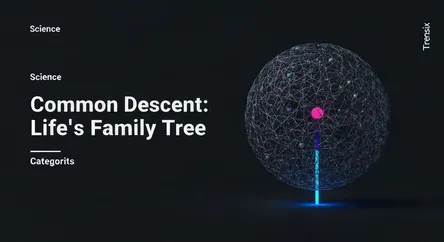Science
Common Descent: Life's Family Tree

Discover common descent, the evolutionary theory that all life on Earth shares a single universal ancestor. Learn how it unites all living things.
What is it?
Common descent is the scientific theory that all living organisms on Earth are descended from a single, last universal common ancestor (LUCA). Proposed by Charles Darwin, this concept is a cornerstone of evolutionary biology. Evidence is vast, coming from genetics, where the universal DNA code links all life, from bacteria to blue whales. Further support is found in the fossil record, showing transitional forms, and comparative anatomy, which reveals homologous structures—similar body parts in different species that suggest a shared ancestry, like the forelimbs of humans, bats, and whales.
Why is it trending?
The principle of common descent remains a key topic due to rapid advancements in genomics and bioinformatics. Modern DNA sequencing allows scientists to map the "tree of life" with unprecedented accuracy, refining evolutionary relationships. It is also highly relevant in public health, especially when tracking the evolution of viruses like SARS-CoV-2. Understanding their common descent helps predict mutations and develop effective vaccines and treatments, making it a critical tool in modern epidemiology and medicine.
How does it affect people?
Common descent profoundly impacts our understanding of biology and our place in nature. In medicine, it's fundamental to studying hereditary diseases and using animal models for research. In agriculture, it guides the breeding of more resilient crops and livestock. Philosophically, it demonstrates the deep interconnectedness of all life, fostering a sense of shared heritage with every other organism on the planet. This understanding underpins conservation efforts by highlighting the unique and irreplaceable branches of our shared evolutionary tree.